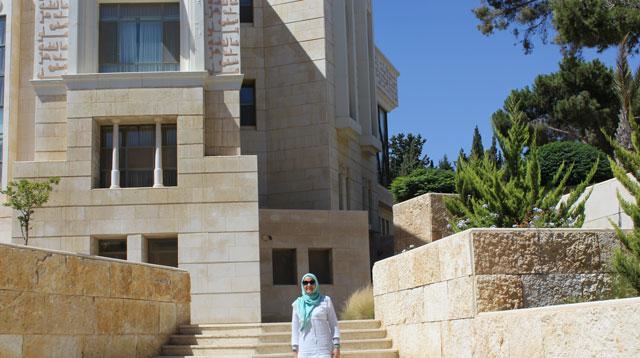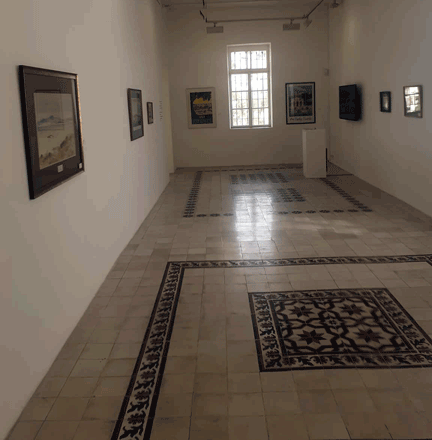You are here
Strife, and reform, characterised late Ottoman era, historian says
By Saeb Rawashdeh - Oct 24,2016 - Last updated at Oct 24,2016

Norig Neveu
AMMAN — Structural and institutional crises, wars, insurgencies and territorial losses, as well as restructuring and reform, characterised the Tanzimat (Reorganisation) period in the Ottoman empire, according to French historian Norig Neveu.
During the Tanzimat period (1839 — 1876), there was an attempt to impose new legislation on the Levant, Neveu said during a recent lecture at the Institut Français du Proche-Orient in Amman.
Reforms included a new land code in 1858 and new legislation on provinces, passed in 1864 and amended in 1869 and 1871, she noted.
“After 1894, the Ottoman governor transferred the capital from Maan to Karak,” she continued.
The territorial reorganisation of Palestine and Transjordan in the second part of the 19th and early 20th centuries made Maan and Karak significant regional centres on the Hajj (the greater Muslim pilgrimage to Mecca) route, said the scholar.
“The Ottoman reassertion of power in the southern regions of the Bilad Al Sham went along with the implementation of new educational policies fitting the reform agenda,” she stressed.
The educational strategy of the Ottomans included the establishment of new schools and curricula, which aimed to spread common values of allegiance to Ottoman rule through the establishment of a loyal local elite, the scholar noted.
This was accompanied by the appointment of Muslim preachers and the distribution of copies of the Koran “to reform and standardise local religious practices”.
The lecturer emphasised that the hierarchy of shrines was dominated by two major mausoleums — Jafar Bin Abi Talib, a companion of Prophet Mohammad, and “Nabi Harun”, Moses’ brother Aaron.
“Both Ottoman administrative archives and the accounts of Western travellers reveal a rich sacred topography of sanctuaries in southern Bilad Al Sham at the end of the Ottoman period,” Neveu underlined.
“A large number of shrines were dedicated to ‘walis’, who were considered holy men and were highly respected by the inhabitants of the region.”
The tribal ancestors [walis] had been venerated as saints by both Muslims and Christians from the area.
“Walis could act against remote enemies and restore the justice,” Neveu explained.
In Maan, there were female saints, while fuqara, especially present in Wadi Musa, were men with special magical powers who performed exorcisms, reached ecstasy and recited Koranic verses to cure the sick, the historian underlined.
“These sites are linked with tribal histories and visited by Muslims as much as Christians, as well as bedouins and town dwellers,” the historian stressed.
Mausoleums had specially designated guards who would take care of the site and pilgrims and perform rituals.
Pilgrimage sites served religious purposes, but were also gathering spots for locals, where trade was conducted and meals of sacrificial animals prepared and shared by worshippers.
Hagiography of those saints is a mix between collective memory and the history of the tribe, she said, adding that in the early 20th century, the Ottoman administration renovated some of these mausoleums, like Jafar Bin Abi Talib in 1906.
“The renovations were a symbolic and strategic investment in major regional religious sites during a period when Sultan Abdülhamid II intended to spread his pan-Islamic ideology. As part of this, the renovations were accompanied by the establishment of new schools that allowed the dissemination of a controlled religious education,” Neveu explained.
The scholar highlighted “the complexity of local sacred topography during the Ottoman period and showed how its study provides an opportunity for the analysis of official religious politics in southern Bilad Al Sham and the ways in which local notables resisted them”.
According to Ottoman sources from that epoch, the religious infrastructure was inadequate in Transjordan, so new mosques were built.
In 1875, the Roman Catholic Church established its mission in the southern Levant but with limited success as Orthodox Christians, who were the majority in the Levant, resisted its theological doctrine, said Neveu.
“These missionaries relied on development on health and education especially among the Greek Orthodox community,” she added.
Related Articles
AMMAN — Between 1866 and 1871, Rashid Pasha, the governor of Damascus, led the first major administrative change by creating the distr
AMMAN — Little attention has been paid to the early Ottoman era, but an abundant collection of documents and records could shed light on the
AMMAN — Hisham Khatib was a Renaissance man — an expert in energy, economy, art history and political history of the Levant.

















